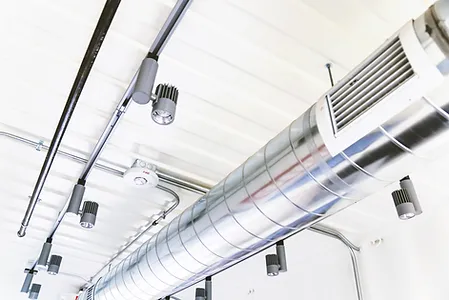
Spiral ductwork has become increasingly popular in the HVAC industry due to its numerous benefits and versatile uses. From industrial facilities to commercial spaces and even residential buildings, spiral ductwork offers a range of advantages and can be easily installed with the right expertise. In this comprehensive guide, we will explore the benefits, uses, and installation process of spiral ductwork.
Benefits of Spiral Ductwork
Improved Airflow Efficiency
One of the key benefits of spiral ductwork is its ability to provide improved airflow efficiency. The smooth interior surface of spiral ducts reduces air resistance, resulting in better airflow and reduced energy consumption.
Durability and Longevity
Spiral ductwork is typically made of high-quality galvanised steel, which provides exceptional durability and longevity. This ensures that the ductwork can withstand the stress of constant airflow and is resistant to corrosion and damage.
Aesthetically Pleasing
Compared to traditional rectangular ductwork, spiral ductwork is often considered more aesthetically pleasing. Its sleek and modern design can add a touch of sophistication to the interior of a building, making it a popular choice for architectural applications.
Cost-Effective Installation
Due to its lightweight and easy-to-handle nature, spiral ductwork can be installed more quickly and cost-effectively than traditional ductwork systems. This can lead to savings on labour and installation costs.
Uses of Spiral Ductwork
Industrial Facilities
Spiral ductwork is commonly used in industrial facilities such as manufacturing plants, warehouses, and distribution centres. Its ability to handle large volumes of air efficiently makes it well-suited for these environments.
Commercial Buildings
In commercial buildings, spiral ductwork is often used for HVAC systems in offices, retail spaces, and restaurants. Its aesthetic appeal and space-saving design make it a popular choice in these settings.
Residential Applications
While less common in residential settings, spiral ductwork can be used in high-end homes and custom architectural projects to provide efficient and visually appealing HVAC solutions.
Installation Process
Design and Fabrication
The installation process typically begins with the design and fabrication of the spiral ductwork. This involves determining the required dimensions and specifications based on the HVAC system and building layout.
Handling and Transport
Spiral ductwork is lightweight and easy to handle, making it easier to transport and manoeuvre around the installation site. This can save time and effort during the installation process.
Assembly and Installation
The spiral ductwork is assembled and installed according to the design specifications. Proper sealing and insulation are critical to ensure optimal performance and energy efficiency.
Quality Control and Testing
After installation, quality control cheques and testing are conducted to ensure that the ductwork meets industry standards and functions as intended.
In conclusion, spiral ductwork offers a multitude of benefits, versatile uses, and a relatively straightforward installation process. Its improved airflow efficiency, durability, aesthetic appeal, and cost-effectiveness make it a viable option for a wide range of HVAC applications. Whether for industrial, commercial, or residential use, spiral ductwork continues to be a popular choice for modern HVAC systems.







